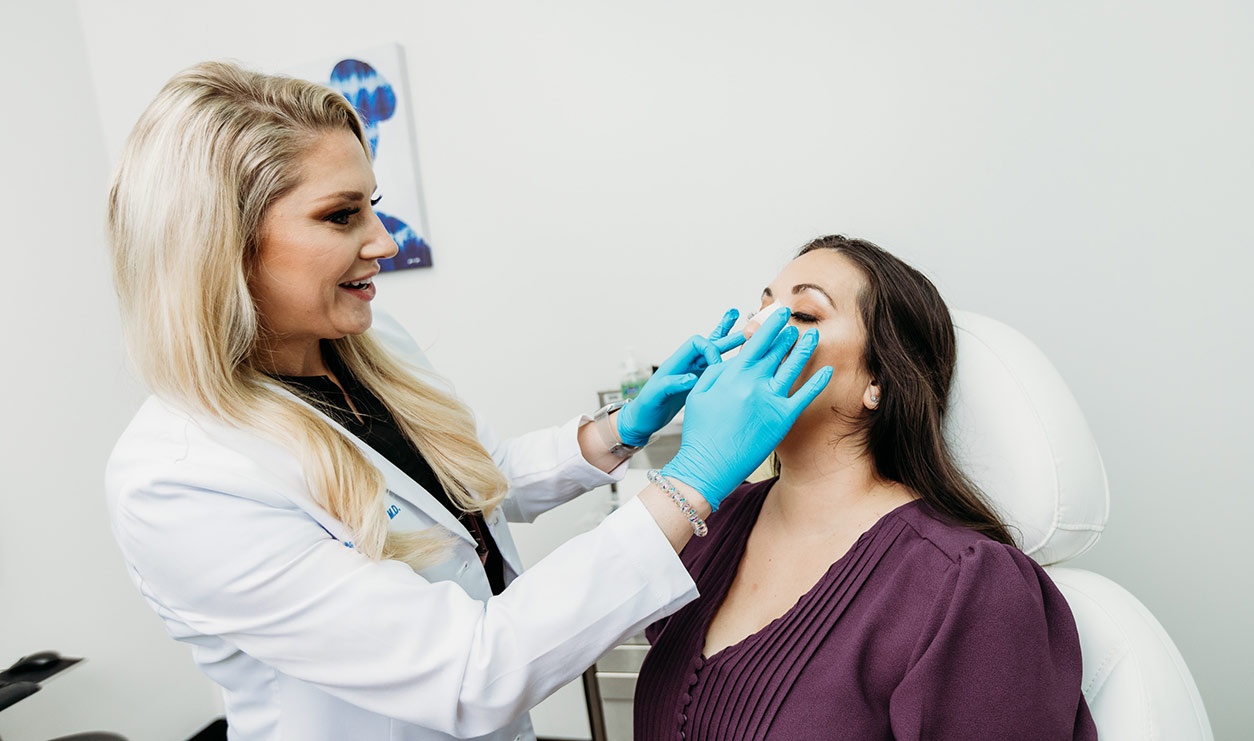
Experience the relief of unobstructed breathing at our Boca Raton facility.
Septoplasty is a specialized surgical procedure aimed at correcting a deviated nasal septum, a common cause of breathing difficulties. At the Nose and Sinus Institute of Boca Raton, our expert surgeons perform this procedure with precision, ensuring improved nasal airflow and overall breathing quality. Whether in a hospital or our state-of-the-art office setting, we prioritize patient comfort and effective results.

Septoplasty involves straightening the nasal septum, the partition between the two nasal cavities. Typically, the procedure includes:
NSIBR septoplasty procedure is Ideal for those seeking relief from nasal obstruction.
Nasal septoplasty recovery is generally straightforward, with most patients resuming normal activities within a few days. Our team provides comprehensive post-operative care instructions to ensure a smooth and comfortable healing process, with minimal downtime and discomfort.
Patients can look forward to experiencing an enhanced quality of life, including the following benefits and more:
Dr. Hancock and Dr. Nachlas take great care in ensuring patient comfort and safety throughout the nasal septoplasty procedure even though patients need to be aware of possible risks and side effects, including:
At the Nose and Sinus Institute of Boca Raton, our surgeons’ expertise ensures optimal outcomes, enhancing both the functionality and comfort of our patients. Contact our Boca Raton office to schedule your consultation today!
Conveniently located in Boca Raton, our ENT doctors serve Boca Raton and all surrounding communities in Palm Beach and Broward Counties
The procedure is often considered a medically necessary procedure to correct breathing issues and is typically covered by health insurance. However, coverage details vary, so it’s best to check with your insurance provider.
The cost varies depending on factors like location, surgeon’s fees, and facility costs. Without insurance, it can range from a few thousand dollars to several thousand.
The procedure usually takes about 1 to 1.5 hours to complete, depending on the complexity of the surgery.
Patients are generally advised not to blow their nose for at least a week (sometimes longer) after treatment to allow for proper healing.
While individual experiences vary, septoplasty is generally not considered highly painful. Postoperative discomfort is typically manageable with prescribed pain medications.
Understanding the complexities of the inside and outside of the nose is imperative to providing long-lasting relief of sinonasal symptoms. Dr. Nachlas and Dr. Hancock have extensive experience treating the nose and sinuses and thoroughly evaluate every patient before recommending a treatment plan. Other nose and sinus procedures commonly performed during the same session as Septoplasty to provide comprehensive relief include:
Take charge of your life today! Call us or submit an online form, and you will be speaking with one of our talented surgeons in no time.
(561) 939-7352